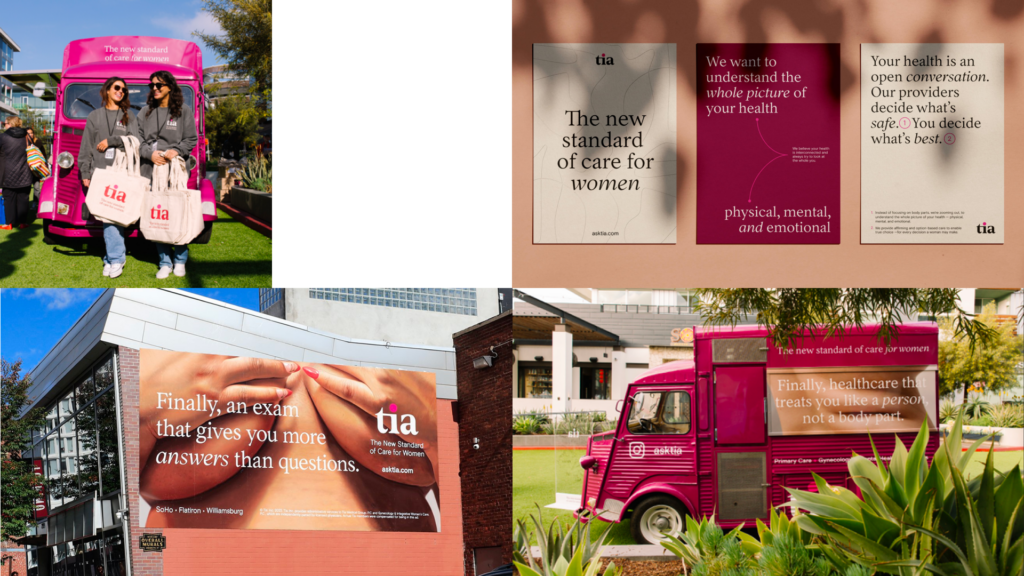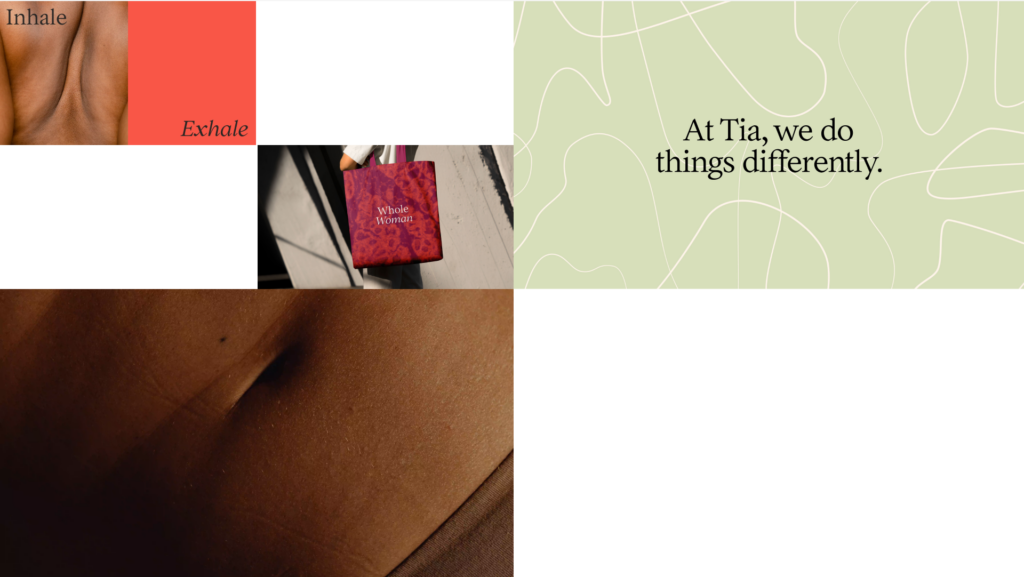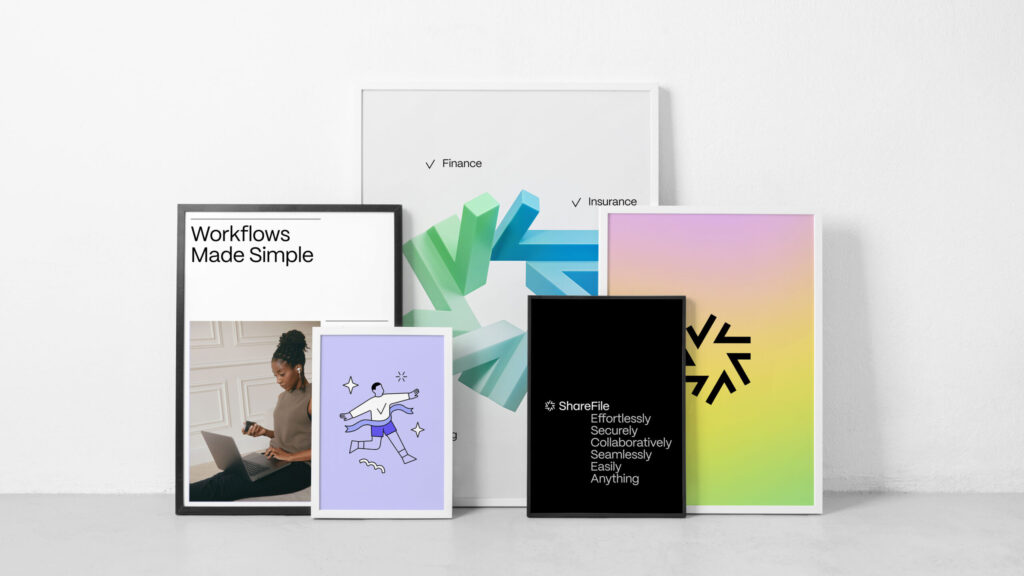Table of Contents:
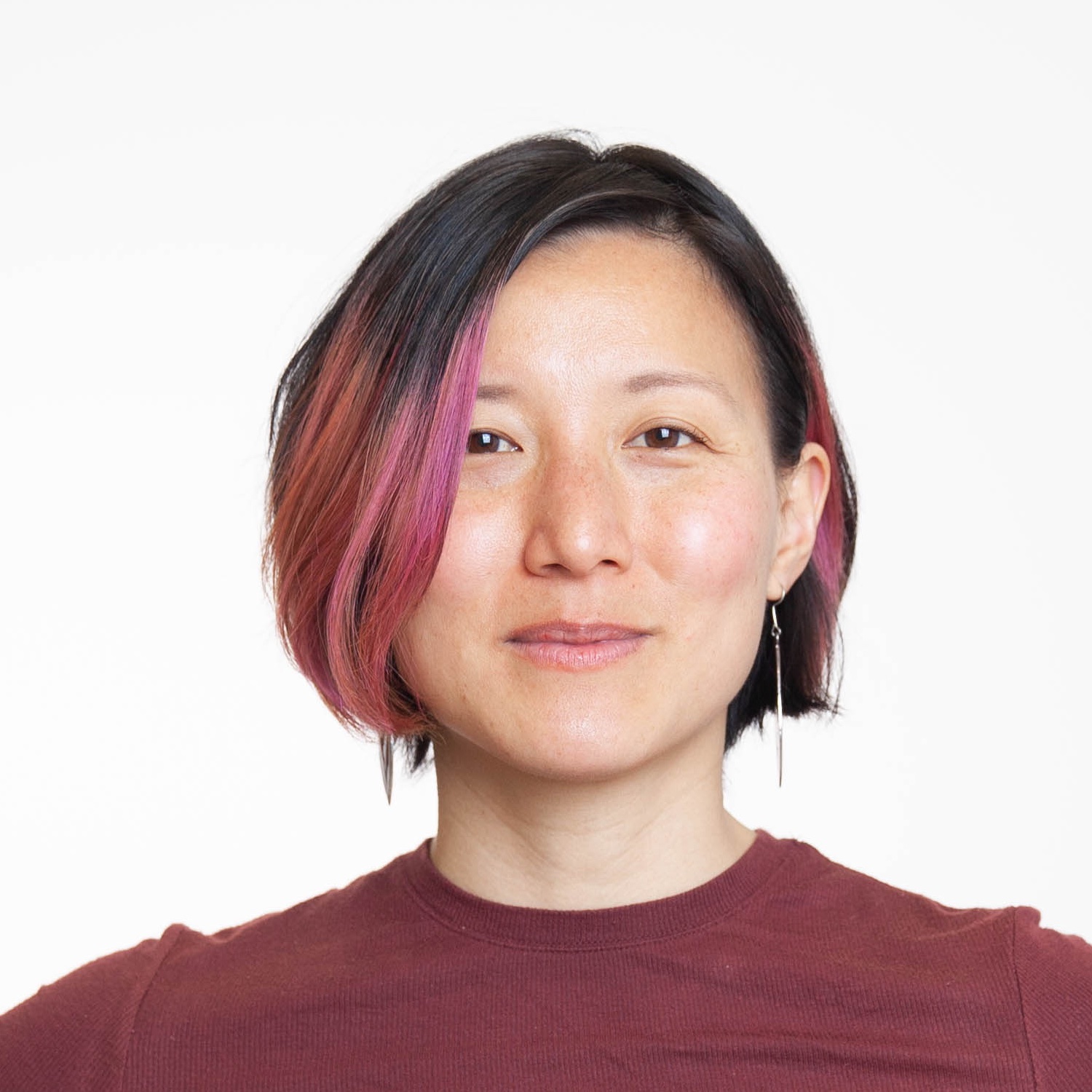
NAME: KATHERINE LEE
COMPANY: ATHLETICS
TITLE: Executive STRATEGY DIRECTOR
FROM: SANDY, UT
CURRENTLY LOCATED: BROOKLYN, NY
SPECIALTY OR AREA OF INTEREST: BUSINESS & BRAND STRATEGY, BAKING
SITE: ATHELTICSNYC.COM
“Design school equipped me with a lot of skills. Things that I could do right then. Or, if I didn't know how to do it, there was a framework for figuring it out.”
Adam Estabrook: Tell me about your strategy journey. There are so many people who come to the role from various backgrounds and studies. You're a strategist. Tell me about your background and what brought you to working in an agency.
Katherine Lee: You're absolutely right, people come to strategy from all sorts of weird corners of the earth. I’ve thought about this a lot lately because strategists of all stripes will reach out to me to say, “Tell me more about strategy, how you landed here, and whether there's a place for me.”
For me, personally, I started in healthcare consulting, because that was what I studied. It was an easy way to say, “Hey look, I can bring an educated lens to this and be your sort of dirtbag research analyst.” So the first clients I worked with were startup clients. Mostly in biotech, and other facets of healthcare, up in Boston. There were a bunch of wacky biotech ideas coming out of MIT and Harvard and the like, so you'd get these quack ideas.
Even at the time it helped me understand that people had difficulty explaining what it was they were trying to do. Conveying their vision, finding the product-market fit for their ideas, and the like. It was my first entree into the space, whether or not I knew it.
I quickly decided that I hated Boston because I was 21 and was like “This place sucks, and I want to leave and go somewhere else.” So I was like, I’ll take a job in New York. And I took one as a research analyst at Standard and Poor's, doing research on publicly traded healthcare companies. What they were interested in was how they could tweak their investments in order to make good on economic and business movements.
[In 2008] that became a really negative place to work, and it was time for me to go to design school.
So, I applied for a program at Parsons called Design and Technology, and went there for 2 years to get my MFA. Looking back… I didn't have a crisp vision of what I wanted to get out of it, but I knew I wanted to explore, try new things, and force myself to think differently by just picking up some hard skills. But, I didn't know what those were.
Design school equipped me with a lot of skills. Things that I could do right then. Or, if I didn't know how to do it, there was a framework for figuring it out. So, I basically staggered out of Parsons, thinking “I actually lived in New York without an income for two years, and I will happily receive any job that anybody would give me.”
Luckily, somebody referred me to Interbrand, who had a pretty rollicking healthcare business at that time, called Interbrand Health. I was like, “I know about healthcare! I can talk healthcare until I'm blue in the face. Yes, let's do this!” And I went there to be a creative strategist, so to speak.
Before then, I didn't even know that brand consulting existed. I didn't know that brand strategy was a thing that people would pay for. At that moment, in 2010, a lot of companies weren't hiring the kind of person I thought I’d be when I left Parsons. I thought I would be a UX or human experience designer, and that wasn't something that businesses were applying FTE money to for a while yet. So I was like, “Fine, great, okay. Brand consulting. I can probably do this.” And I became an accidental brand strategist and kept on keeping on.
I did brand strategy mostly for healthcare companies for a few years, and then I took that sort of B2B experience and transitioned into VSA, which was doing less healthcare work and more enterprise tech work. After I left VSA, I went to some of our Google clients, then to Big Spaceship where I was working for the same clients, but mostly on social digital stuff which I hated.
But Big Spaceship is an interesting land. They're really good at what they do, but it’s a bunch of 20-somethings who eat, breathe, and sleep the internet all day long and know all the deep, dark corners of Twitch and Netflix. They're like Redditors on speed. It's really quite a fascinating place. After that, I didn't know where I belonged, but I didn’t belong there. So, I freelanced for years.
During that time I was somewhere around 50/50 between two types of projects. The first were, an RFP comes in and I assemble a small team to go after it, sort of like a teeny tiny agency. The second was being a hired gun, where I sat down inside an enterprise project and led the strategy workstream from start to finish.
That was basically what I did for 5 or 6 years, then the pandemic hit, and it was dead for two months. I built a stone wall outside of my house upstate and I made a stew every day, but then people were like “Oh, well, wait! So we still have all this stuff to do, and we didn't do anything for two months, but we still have these goals to hit!” So, people started doing work again, and it was just nonstop ever since.
Somewhere in there I joined Athletics. Like so many other soldiers of our time, I was doing this gross thing where I’d get up and brush my teeth or whatever, and then I'd take like 7 and a half steps to my desk and sit down. Then at the end of the day, it'd be dark and wintertime. I'd look down, and it would be another 7 and half steps. I was like, “Shit!” But, then I wouldn't do anything about it other than get in bed and that would be the end of the day.
I just felt like I needed a change. Different people and to have a team interaction so I wouldn't just be flying solo or working nonstop. I joined Athletics and have been building a small team of different flavors of strategists. Because we do different kinds of work, the team spans both traditional brand and digital strategy to inform experiences and innovation design.
A lot to unpack! Tell me more about the present role, what does a typical strategy assignment look like from the moment you get the brief through hand off or final delivery?
The types of work that we do at Athletics span two different worlds. There'll be a more traditional brand identity project and then we also do a fair bit of digital or product build. We build a fair number of websites, and then we do things like technology enablements for brand teams. Let's say you're a big brand and you’ve got 500 designers working on your team, and you get all this ugly crap getting turned out all over the world. How can we bring some ease to their governance process without making it so laborious?
A typical strategy assignment varies from thing to thing but we always have some sort of discovery phase, where we do research, learn about the brand and the audience that we’re going to serve.
For brand identity projects, we'll talk to all the stakeholders that have to steward the brand, especially from a leadership standpoint. Then, we'll speak to their audiences.
We'll also look at the competitive space, because that's always important. What are your competitors doing? Why should we care about this thing? Why should we care about your brand? How is it seated within the competitive context?
Then we'll move into strategy, and there will be some legit deliverables through that phase. The bread and butter deliverables that live inside strategy for an identity project are brand positioning and a brand platform.
The brand platform could take a slightly more traditional format, or not, but it needs to help people speak from the same sheet and answer the questions “What is this thing? How does it work? Or, how does it do the thing it does, and why should I give a damn about you and your brand?” These are some of the biggest questions that we answer with a brand platform, and that’s often enough for people to move into thinking about some sort of creative output.
In our identity work there will be verbal identity or voice which is guidance around how your brand should speak out and about in the world. If verbal identity is how we speak, messaging is what we actually say.
Then there's the visual identity system. Sometimes that'll get down to the nitty-gritty of logo colors, typeface, graphic elements, photography, illustration. But now, more and more, because of how brands interact in the world, it has to have an exploration of how the brand moves. Motion principles, how to incorporate AI and 3D into the way the system lives and breathes out in the world and the execution of the brand.
I don't know how you are, but like I've never been a big manual reader. And basically a guidelines document is a manual. If you don't read the manual, then everything is going to be ugly or off brand, and we're finding better ways of bringing guidance into brand governance.
For example, last year we built one for the fintech company Square. They provide all sorts of financial services. But, because they’re a mobile brand that plugs into your mobile phone, it's always on the go. So, motion is super important and you have to think about how differently things could move.
We developed a set of motion principles for [them] that details how their brand moves in the world. Then, we built it into a tool, which is a guide for effects, almost to the point that a dummy would be like, “I could do this, even though I'm not a proper designer. I could take on brand colors, images, and motion patterns… plug them in and crank out on-brand videos for a presentation that I'm selling to my boss's boss.” Or, “I can make social assets in lickety-split!”
It's gotten a lot of traction, and that's the kind of thing that we're doing more and more of, because that's what bigger client teams really need.
NEW MUSEUM - KATHERINE LEE, ATHLETICS
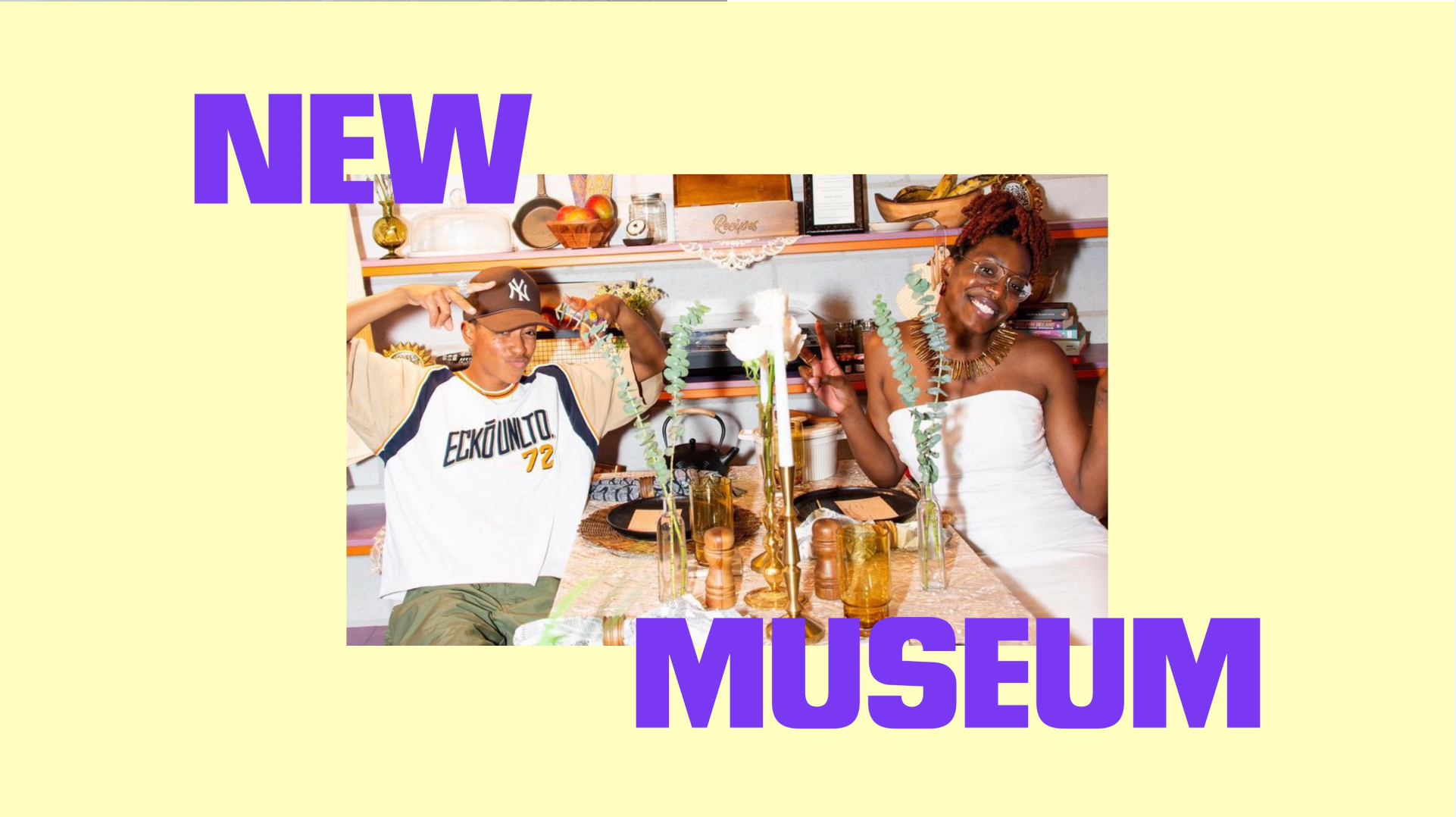
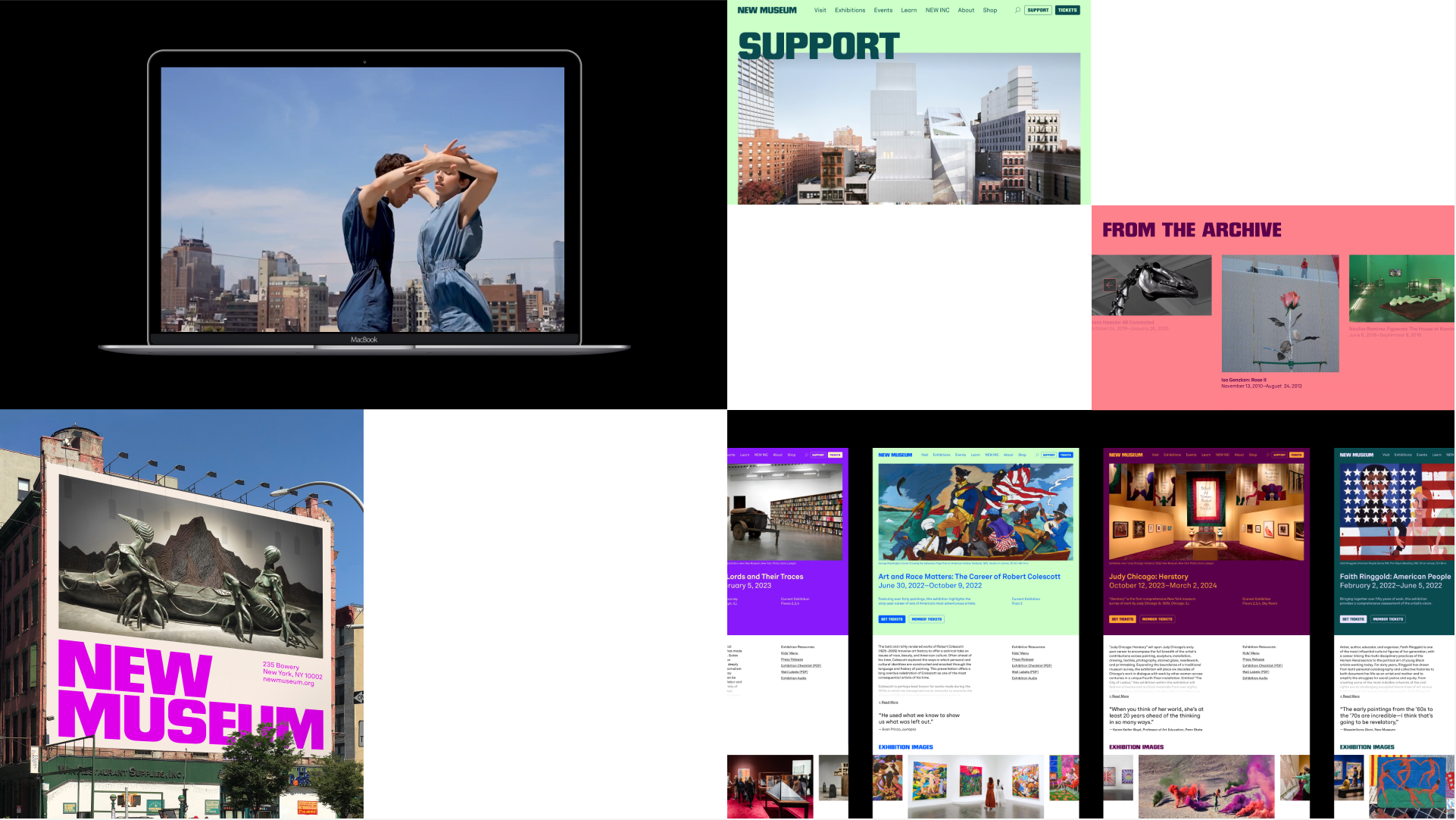
“But, the best briefs have a big enough vision that someone can pick it up and say, 'That's cool. I want to work on this.' That's the baseline of a great brief.”
In conversations I get the sense there are two different ways of approaching brands. The first is the top-down, brand fortress: here’s your guidelines, this is how to make everything consistent. It's an old school approach to brand.
Then, there's this other sense of “I'm going take you on a journey to develop cool things.” That way I'm drawing you into being on brand while giving you the flexibility to do the things that you need to do.
Listening to you, the second sounds like what you're saying. People are going to do what they’re going to do anyway.
Yes, totally!
Could you share with me any approaches, frameworks, or tools that you use on a regular basis for your strategy functions?
I don't think this is particularly distinctive anymore, but in every brand strategy I build I insist on getting data. Either firsthand, or secondhand from the client, on the audience.
Before, you could just look inside the brand and build a strategy from that. These days it's much more important to understand where your audience is at. Hear directly from them and understand their brand perception in a really authentic way.
In terms of frameworks, I default to the “What, How, Why.” That's what most companies need, no matter what stage they are at, but especially at early stage companies that are still youthful in their overall story and don't have that crisp way of saying “here's what we do. Here's how we do it. Here's why you should care.”
At the end of the day that's what brand is for: it's a storytelling tool to bring everybody along.
My day to day tools are Google Workspace, Figma, Miro… But, I'm still a pencil and paper kind of person! I sketch a lot of things out, and that helps me in terms of storytelling storyflow. I just don't think there have been that many tools that have helped me innovate beyond the joy of scribbles on a page.
And lately, incorporating quite a lot of AI for thought processing or as a sounding board. Say, coming up with 20 ideas about a thing, and then maybe one of those will spark an interesting new thread or new thought that you hadn't had before.
So that's kind of what we're using AI for internally. We've been careful about the ethics around it, because it is still kind of a new game, and nobody necessarily knows where the guardrails are around it.
For some smaller brands that might be a non-issue. But if you're a Google, Samsung, or someone big and you don't want your proprietary information into the world…. You have no idea where it goes.
And then there's this grander anxiety about the blandification of everything that you make, if you use AI to make it.
Do you think we're still missing that thing in the middle? That unexplainable process that drives creativity and develops something new? If we're just turning out the same stuff with the same tools, using AI, then it becomes the lowest common denominator?
You can use it to make something really creative and new. I recently took a class through Index Base on generating AI images. I used a bunch of models using different kinds of text or image prompts. The results are very mixed. It's very difficult to control, because it’s very, very early days.
We use a lot of Notion internally. And I use Notion to take notes and compile my thoughts. We started using 3.0, which is smarter and you can ask it questions like a human being, and it sums up the notes from a conversation. So, I was reading through the summary of a meeting that I missed, but it felt like someone with severe autism had summarized a meeting.
The things that I'm listening for in a meeting, especially the more senior I get, the more I'm listening for the things people are not saying and Notion’s AI simply has no sense of that whatsoever. Instead, it’s telling me the sentiment is positive without thinking that the socialized feedback is delivered as a sort of shit sandwich kind of way. Where you say something really nice, then you say something you actually mean, and then you say something really nice again afterward. Just so it won't be like, “Oh, I hate the work. I hate you.”
TIA - Katherine LEE, ATHLETICS
Let’s talk about client interaction. What does the ideal project brief coming from a client look like?
A good brief should fly high and fly low. Here's the big thing that we're trying to achieve and here's the thing that we want if we’re successful at what we're trying to do, and here’s some idea of how we're going to get there.
But, the best briefs have a big enough vision that someone can pick it up and say, “That's cool. I want to work on this.” That's the baseline of a great brief.
Let’s say you have a verbal interaction with the client, who's in the room with you and what’s going on in that client interaction?
I take a bit of the inside baseball view. I like it when we have the day-to-day brass tacks people that are going to legit carry all of your supplies the whole time and be your day-to-day contacts. But, I also want the person who’s in charge of setting the vision for the project to be involved. That person is really important.
Whoever those final decision makers are, even if they're kind of rogue actors, I want those people in the room. That's a huge thing, and I want that person to be vocal and able to set the sense of psychological safety.
Do you prefer to build that trust on your own, one on one, or do you like to bring other people from the agency along for the ride?
We all do it as a team. I don't ever want the relationship to be two people in a quiet room and then conveyed. It's so much better if it's decentralized.
It's hard to do, but it's a good thing.
Do you work very collaboratively with your teammates or do you like to go away and have time to build things up before you share?
My style is to go back and digest, sort of process, and then come up with at least a few threads of what I think is going on, some hypotheses, thinking to build on what we've heard in the interview, and see if there are patterns building.
SHAREFILE - KATHERINE LEE, ATHLETICS
“It depends on the culture of the organization. But, usually there's a voice who deserves to be louder in some way.”
When you get the initial creative work after handing off the brief, are you ever taken by complete surprise with what they come back with?
I don't think so. We work hand in hand to agree on the creative brief. I don't think I would ever just make a creative brief and then be like, “Hey, is this cool with you?” And they wouldn't be like, “Hey, we made some stuff. What do you think about this?”
One of the biggest challenges we face is navigating multiple sets of stakeholders, both internal and external. How do you manage challenging or conflicting inputs that you get across stakeholder groups?
It depends on the culture of the organization. But, usually there's a voice who deserves to be louder in some way. And, if it feels like there are irreconcilable differences then it's basically just horrible politics you're trying to hack through.
The best way to deal with organizational politics, I think, is to bring it back to audience needs.
With a lot of creative work it’s like, “I like this” or “you don't like that” or “this is better in the product” or “this is easier for our product to talk about and we want to talk about ease of use until we're blue in the face.”
Well, okay, but no one cares about that because it's table stakes.
WANT TO HEAR MORE?
Never miss out on future content. Use the form below to subscribe and stay informed about upcoming interviews, be the first to read interview transcripts, and gain insights you won't hear anywhere else.
Your privacy is important to us, and your information will never be shared or sold. Unsubscribe at any time.
